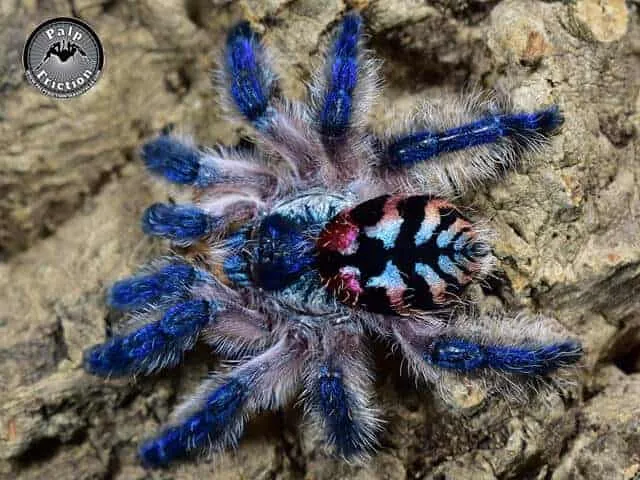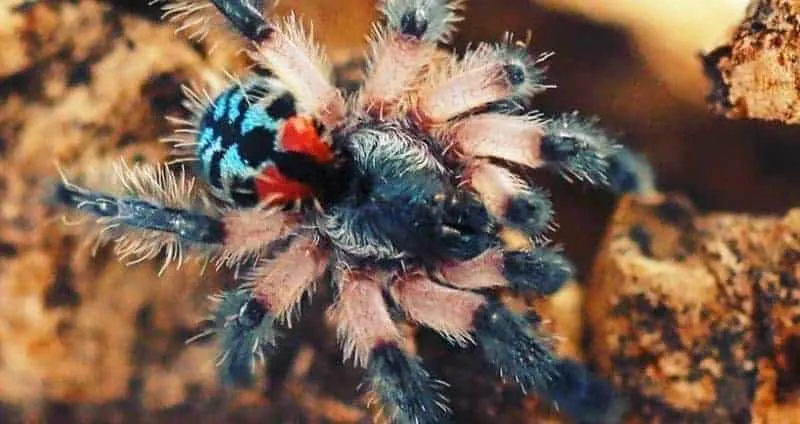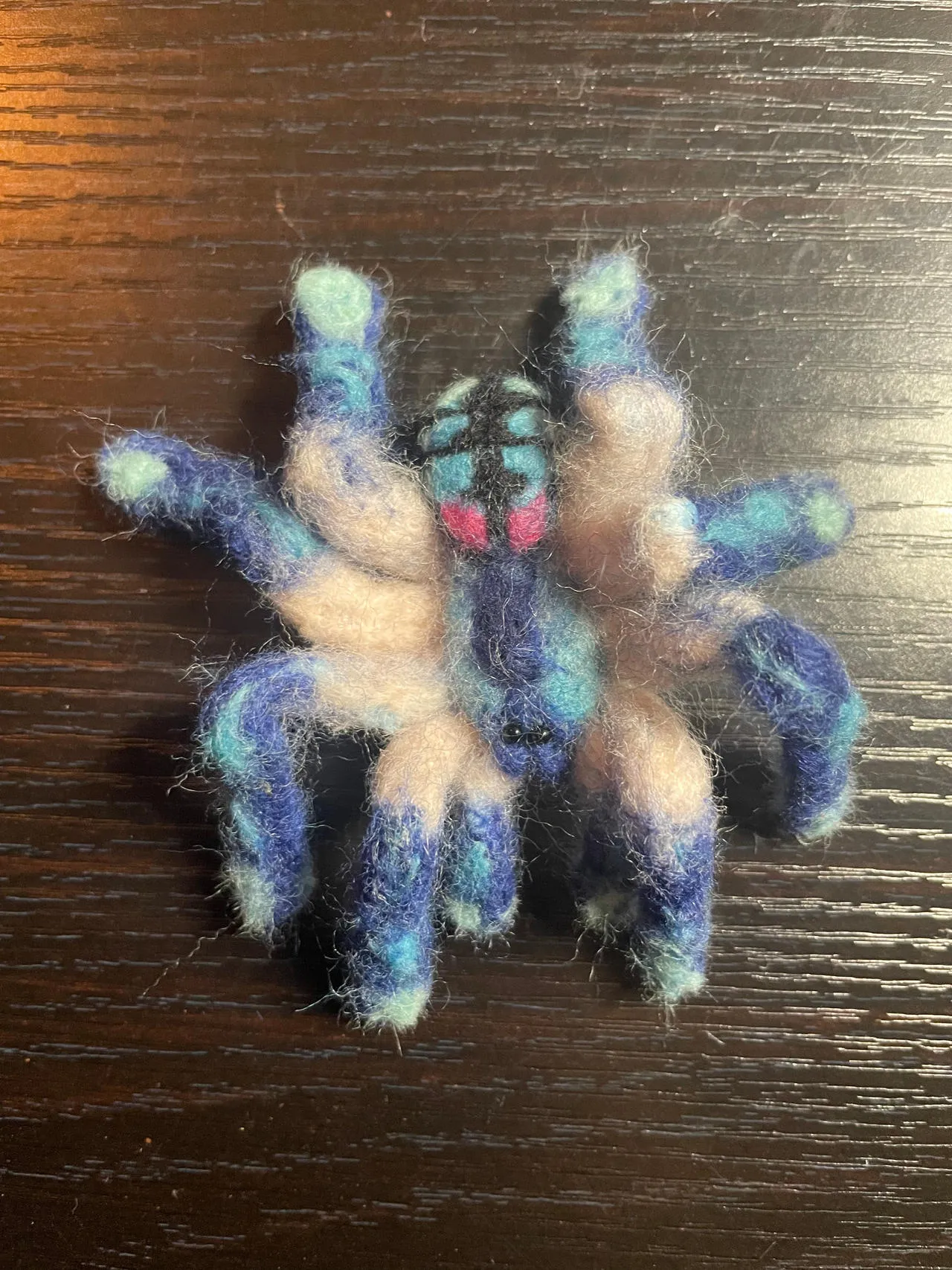The Allure of the Brazilian Jewel Tarantula
The Brazilian Jewel Tarantula, scientifically known as Typhochlaena seladonia, is a captivating arachnid that has captured the attention of tarantula enthusiasts worldwide. Its striking appearance, coupled with its relatively docile temperament, makes it a sought-after pet for experienced keepers. This tarantula, native to the lush rainforests of Brazil, showcases a vibrant display of colors and patterns, truly living up to its ‘jewel’ moniker. This article delves into the fascinating world of the Brazilian Jewel Tarantula, providing you with essential facts and insights into its care, behavior, and overall allure. Get ready to explore the captivating life of this extraordinary creature, and discover what makes it so special to tarantula collectors.
Appearance and Characteristics
The Brazilian Jewel Tarantula’s beauty is undeniable, making it an immediate standout among tarantula species. This tarantula is not just a pretty face. It is a study in contrasts, a living work of art that showcases nature’s artistry. Understanding its appearance is crucial for recognizing its unique characteristics. These qualities are also essential for appreciating its beauty and understanding its needs. It’s important to note that the coloration can vary slightly depending on the individual tarantula and its stage of development. The visual appeal is a significant factor in its popularity as a pet, drawing in enthusiasts who appreciate its aesthetic qualities.
Size and Coloration

Brazilian Jewel Tarantulas are medium-sized tarantulas, with females typically reaching a leg span of about 4 to 5 inches, while males are often slightly smaller. The coloration is where this species truly shines. Their bodies display a stunning combination of vibrant greens, purples, and blues, often with metallic sheens that shimmer under light. The carapace (the upper shell of the cephalothorax) is usually a striking green, while the legs may showcase a gradient of purples and blues. The abdomen frequently features a dark, almost velvety appearance, creating a beautiful contrast with the other colors. This exquisite coloration is the primary reason behind the ‘Jewel’ designation. Their colors are at their brightest and most vibrant shortly after molting.
Distinguishing Features
Beyond the coloration, the Brazilian Jewel Tarantula possesses other distinguishing features. The overall body shape is typical of arboreal tarantulas, with a slightly elongated body and relatively long legs, well-suited for climbing and navigating its environment. Their pedipalps, small appendages near the mouth, are often a darker shade of purple or black, adding to their striking appearance. The fangs are also a prominent feature, designed for capturing and subduing prey. These are usually a dark color, which contrasts well with the rest of the tarantula’s body. The presence of urticating hairs on the abdomen is another key characteristic, though they are not as prominently used as in some other tarantula species. All these features combine to create a unique and visually stunning arachnid.
Habitat and Native Range
Understanding the natural habitat of the Brazilian Jewel Tarantula is crucial for providing optimal care in captivity. Replicating its native environment helps ensure the tarantula thrives, displaying its best health and behavior. The Jewel tarantula’s needs are specific, and knowing where it comes from is key to its success. The information regarding its origins will also help you appreciate the tarantula’s fascinating biology and how it has adapted to survive in its ecosystem. Learning about their native range is part of responsible pet ownership.
Geographic Origins

The Brazilian Jewel Tarantula is native to the rainforests of Brazil, specifically found in the Amazon basin. These rainforest environments are characterized by high humidity and a warm climate, which are essential for the tarantula’s survival. They are typically found in the states of Amazonas and Pará. This area is rich in biodiversity, creating a complex ecological system for the tarantulas. The Jewel tarantulas have adapted to the unique challenges and resources available in this region. The environment is also responsible for the tarantula’s vivid colors. As you learn about this environment, you will understand how to care for the tarantula.
Preferred Environment
Brazilian Jewel Tarantulas are arboreal, meaning they primarily live in trees. They construct their habitats in the rainforest, often utilizing the gaps within the foliage. In their natural habitat, these tarantulas are typically found in humid environments, with temperatures ranging from 75 to 85 degrees Fahrenheit. This requires a high level of humidity. These spiders seek refuge under leaves, in tree hollows, or within dense vegetation. They are masters of camouflage, blending into their surroundings with their vibrant coloration. When keeping them in captivity, it’s important to replicate these conditions. This includes a vertical enclosure, a substrate suitable for burrowing, and plenty of hiding places.
Behavior and Temperament
The Brazilian Jewel Tarantula is generally considered a docile species, making it a popular choice for tarantula enthusiasts. However, understanding their behavior and temperament is vital for safe and responsible ownership. Their reactions to threats, their typical activity levels, and their overall interactions with their environment are all key components to understanding their personality. When handling these tarantulas, it is important to do so carefully. The Jewel tarantula is not aggressive but can still be defensive if it feels threatened. Learning about their habits is a necessary step for anyone who wishes to keep this type of tarantula as a pet.
Defensive Mechanisms

While generally docile, Brazilian Jewel Tarantulas possess several defensive mechanisms. Their primary defense is their ability to flee, preferring to retreat to their hide if they feel threatened. They can also flick urticating hairs from their abdomen, which can cause irritation if they come into contact with skin or eyes. While not considered highly venomous, they can bite if provoked. These bites, though rare, can be painful. Understanding these defensive mechanisms is essential for handling the tarantula and providing a safe environment. Observe the Jewel’s movements and learn to recognize its triggers.
Typical Activity
Brazilian Jewel Tarantulas are most active during the evening and night. They are known to be ambush predators, waiting patiently for prey to come within striking distance. In their enclosures, they will often spend time exploring their surroundings, climbing, and seeking out suitable hiding spots. They may also spend time maintaining and improving their web. Their activity levels can vary depending on factors like temperature, humidity, and the availability of food. They are fascinating creatures to observe, and their behavior can offer a glimpse into the intricate world of arachnids.
Diet and Feeding Habits
Understanding the diet and feeding habits of the Brazilian Jewel Tarantula is crucial for its health and well-being. They are carnivores, and their nutritional needs must be met to ensure they thrive. These tarantulas have specific preferences and require a well-balanced diet. They also require the appropriate feeding schedule for optimal health. Feeding also is a great chance to observe the tarantula and study its behaviour. The feeding regimen provides a good insight into the tarantula’s overall health. It is important to understand their dietary requirements to keep your Jewel tarantula content and thriving.
What They Eat

Brazilian Jewel Tarantulas primarily feed on insects, which they ambush in their natural environment. In captivity, they readily accept a variety of insect feeders, including crickets, cockroaches, and mealworms. It is important to vary the diet to ensure they receive a range of nutrients. It is advised to avoid feeding wild-caught insects, as they may carry parasites or pesticides. Also, the size of the prey should be appropriate for the size of the tarantula. Newly hatched spiderlings will require smaller prey, such as fruit flies. Ensure the insects are gut-loaded before feeding to provide the tarantula with additional vitamins and minerals. This contributes to its growth and overall health.
Feeding Frequency
The feeding frequency of the Brazilian Jewel Tarantula depends on its age and size. Spiderlings require more frequent feedings, usually every few days, to support their growth. As they mature, the feeding frequency can be reduced. Adult tarantulas can typically be fed once or twice a week. It is important to observe the tarantula’s behavior and adjust the feeding schedule accordingly. A tarantula that refuses food may be preparing to molt. Always remove any uneaten food within 24 hours to prevent mold and mites from developing in the enclosure. Providing fresh water is equally important for hydration.
Lifespan and Reproduction
The lifespan and reproductive cycle are important aspects of understanding the Brazilian Jewel Tarantula. As pet owners, we must know about the average lifespan of the species. This information helps us prepare for the long-term care of the tarantula. The process of mating and reproduction reveals how these creatures contribute to their populations and provide insight into their complex lives. Learning about their reproductive cycle is essential to understanding how they survive in the wild and how to breed them responsibly in captivity. Understanding these factors can enrich the experience of keeping a Jewel Tarantula.
Average Lifespan

The lifespan of a Brazilian Jewel Tarantula varies depending on its sex. Female Jewel tarantulas can live for up to 12-15 years, or even longer in ideal conditions. Males, however, have a significantly shorter lifespan, typically living for only 2-3 years. This is due to the fact that males mature faster and often die shortly after mating. This difference in lifespan is an important consideration when deciding to keep a Jewel tarantula as a pet. The longer lifespan of females means a longer-term commitment to their care.
Mating and Egg Laying
Mating the Brazilian Jewel Tarantula can be a challenging but rewarding experience for experienced keepers. The process involves introducing a mature male to a mature female. If the female is receptive, they will mate, and the male will typically die shortly afterward. After mating, the female will produce an egg sac containing hundreds of eggs. She will fiercely guard the sac until the spiderlings hatch. Raising the spiderlings requires specialized knowledge and care, including providing appropriate food and housing. Breeding these tarantulas is a complex process, but can be a thrilling one to see the next generation of these stunning creatures.
